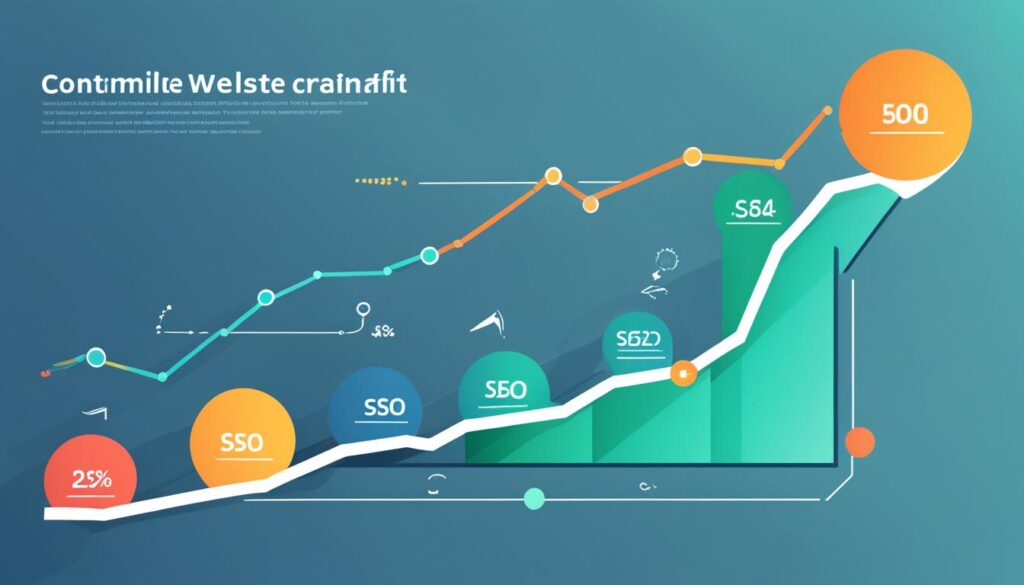
In this guide, I will explore the power of content pieces for driving SEO and provide valuable insights for website creators. By creating optimized content that aligns with SEO best practices, you can enhance your site's visibility and attract more organic traffic.
Content pieces play a crucial role in SEO by providing valuable and relevant information to users. They can include blog posts, articles, infographics, videos, and more. When these pieces are optimized with targeted keywords, high-quality content, and user-friendly formatting, they can significantly improve your site's search engine rankings.
To create content pieces that drive SEO, it's important to conduct keyword research and identify relevant keywords to target. These keywords should be strategically incorporated into the content, including in the title, headings, body, and meta data. Additionally, the content should be engaging, informative, and tailored to the needs of your target audience.
To determine the effectiveness of your content pieces for SEO, it's essential to track key metrics such as organic traffic, bounce rate, time on page, and conversion rates. Monitoring these metrics will help you identify what types of content are driving the most traffic and engagement, allowing you to refine your content strategy for better SEO results.
Creating content pieces that drive SEO is a critical component of any website creator's strategy. By understanding the power of content pieces, creating optimized content, and measuring its impact, you can increase your site's visibility, attract more organic traffic, and ultimately achieve your SEO goals. Remember to constantly monitor and refine your content strategy to stay ahead of the ever-evolving landscape of SEO.
Key Takeaways:
- Content pieces are essential for driving SEO and attracting organic traffic.
- Optimized content with targeted keywords and user-friendly formatting improves search engine rankings.
- Conduct keyword research and tailor the content to the needs of your target audience.
- Track key metrics to measure the impact of your content pieces on SEO.
- Constantly monitor and refine your content strategy to stay ahead in the ever-evolving SEO landscape.
Understanding the Power of Content Pieces for SEO
When it comes to driving SEO, content pieces are powerhouses that can significantly impact your website's visibility and search engine rankings. These pieces provide valuable and relevant information to users, helping to attract organic traffic and engage your audience. Content pieces can take various forms, including blog posts, articles, infographics, videos, and more.
Optimizing your content pieces is key to unleashing their full potential. By strategically incorporating targeted keywords, creating high-quality content, and implementing user-friendly formatting, you can enhance your site's SEO performance and climb up the search engine results pages.
Let's explore the different types of content pieces that can elevate your SEO game:
- Blog Posts: Well-written and informative blog posts can drive organic traffic to your website. By addressing topics that resonate with your target audience and incorporating relevant keywords, you can improve your site's visibility.
- Articles: In-depth articles provide comprehensive information and establish your expertise in a particular field. Optimizing these articles with targeted keywords can increase their chances of appearing in search engine results.
- Infographics: Visual content like infographics can communicate complex information in a visually appealing and easily digestible format. When optimized with relevant keywords, they can attract both organic traffic and social media shares.
- Videos: Engaging videos can captivate your audience and keep them on your site for longer periods. By optimizing video titles, descriptions, and tags with keywords, you can improve their discoverability in search engines.
Here is an example of how content optimization can boost your site's search engine rankings:
| Content Piece | Keywords | Search Engine Ranking |
|---|---|---|
| Blog Post: "10 Essential SEO Tips" | SEO tips, essential SEO, website optimization | Page 1 |
| Article: "The Ultimate Guide to SEO" | Ultimate SEO guide, website ranking, search engine optimization | Page 1 |
| Infographic: "Top 5 SEO Strategies" | SEO strategies, search engine marketing, organic traffic | Page 1 |
| Video: "Optimizing Your Website for SEO" | Website optimization, SEO techniques, search engine visibility | Page 1 |
By optimizing your content pieces and targeting the right keywords, you can achieve higher search engine rankings, increase organic traffic, and boost your overall SEO performance.
Now that you understand the power of content pieces for SEO, let's delve into the process of creating optimized content in the next section.
Creating Optimized Content Pieces
When it comes to driving SEO, creating optimized content pieces is crucial. To ensure your content reaches its full potential, it's important to conduct thorough keyword research and identify relevant keywords to target. Incorporating these keywords strategically throughout your content will help search engines understand the context and relevance of your pages.
Start by including the target keyword in the title of your content piece. This will immediately signal to both search engines and readers what your content is about. Additionally, make sure to use relevant headings and subheadings that include your target keywords. This not only helps with the structure and readability of your content, but also makes it easier for search engines to index and rank your pages.
In addition to using keywords in headings and subheadings, it's important to sprinkle them naturally throughout the body of your content. Aim for a keyword density of around 1-2% to avoid keyword stuffing, which can have a negative impact on your SEO efforts. Remember, the primary goal is to create content that provides value and engages your audience, not just to rank for specific keywords.
Don't forget about meta data! Optimizing your meta title and description with relevant keywords can significantly improve click-through rates and attract more organic traffic. The meta title should be concise, yet descriptive, while the meta description should provide a compelling summary of what users can expect from your content.
When creating content pieces that drive SEO, it's important to always keep your target audience in mind. Tailor your content to their needs and interests, providing valuable and informative information that answers their questions and solves their problems. Engaging your audience with high-quality content will not only improve your SEO rankings, but also encourage social sharing and increase your brand authority.
"Creating optimized content pieces is not just about incorporating keywords, but about providing value and engaging your audience."
By following these best practices, you can create optimized content pieces that are not only search engine-friendly but also resonate with your target audience. Remember, SEO is an ongoing process, so keep monitoring your performance and making adjustments to ensure your content continues to drive success.

| Benefits of Optimized Content Pieces: | Tips for Creating Optimized Content Pieces: |
|---|---|
| Improved search engine rankings | Conduct thorough keyword research |
| Increased organic traffic | Incorporate keywords strategically |
| Enhanced visibility and brand authority | Create engaging and informative content |
| Higher click-through rates | Optimize meta data |
| Better user engagement and social sharing | Tailor content to your target audience |
Measuring the Impact of Content Pieces on SEO
To determine the effectiveness of your content pieces for SEO, it's essential to track key metrics such as organic traffic, bounce rate, time on page, and conversion rates. Monitoring these metrics will help you identify what types of content are driving the most traffic and engagement, allowing you to refine your content strategy for better SEO results.
Organic Traffic: This metric indicates the number of visitors that come to your website through organic search results. By monitoring organic traffic, you can assess the success of your SEO efforts and identify which content pieces are attracting the most visitors.
Bounce Rate: The bounce rate measures the percentage of visitors who leave your website without taking any further action or navigating to other pages. A high bounce rate can indicate that the content piece is not engaging or relevant to your target audience, and may need to be optimized.
Time on Page: Tracking the time visitors spend on your page can help you determine the level of engagement with your content. If users are spending a significant amount of time on a particular content piece, it suggests that they find the information valuable and are likely to engage further with your website.
Conversion Rates: Conversion rates are a vital metric for measuring the success of your content pieces. It represents the percentage of visitors who complete a desired action on your website, such as making a purchase, filling out a form, or subscribing to a newsletter. By analyzing conversion rates, you can identify which content pieces are driving the most conversions and optimize your strategy accordingly.
"Tracking these key metrics allows you to gain insights into the impact of your content pieces on SEO and make data-driven decisions to improve your website's performance."

By consistently monitoring and analyzing these metrics, you can gain a deeper understanding of the effectiveness of your content strategy and make informed decisions to improve your SEO performance. Whether it's adjusting keywords, optimizing content pieces, or exploring new formats, measuring the impact of your content pieces is crucial for maintaining a strong online presence and driving organic traffic to your website.
Conclusion
Creating content pieces that drive SEO is a critical component of any website creator's strategy. By understanding the power of content pieces, creating optimized content, and measuring its impact, you can increase your site's visibility, attract more organic traffic, and ultimately achieve your SEO goals.
To maximize the effectiveness of your content strategy, it's important to constantly monitor and refine your approach. The landscape of SEO is ever-evolving, so staying ahead of the curve is crucial. Regularly analyze key metrics such as organic traffic, bounce rate, time on page, and conversion rates to identify what types of content are resonating most with your audience.
One of the key elements to successful content creation is utilizing targeted keywords. Conduct thorough keyword research to identify the terms and phrases that your target audience is searching for. Incorporate these keywords strategically throughout your content in a natural and meaningful way, including in the title, headings, body, and meta data.
In addition to keywords, focus on creating high-quality, engaging, and informative content that addresses the needs and interests of your audience. By consistently providing valuable information and resources, you can build trust and credibility with your users, encouraging them to return to your site and share your content with others.
FAQ
What are content pieces and why are they important for SEO?
Content pieces are valuable and relevant information provided to users, such as blog posts, articles, infographics, and videos. They play a crucial role in SEO by improving search engine rankings and attracting organic traffic.
How can I create optimized content pieces for SEO?
To create optimized content pieces, conduct keyword research and strategically incorporate relevant keywords into the title, headings, body, and meta data. Additionally, ensure the content is engaging, informative, and tailored to your target audience.
How can I measure the impact of content pieces on SEO?
To measure the impact of content pieces on SEO, track metrics like organic traffic, bounce rate, time on page, and conversion rates. This will help you identify the most effective content types and refine your content strategy for better SEO results.











